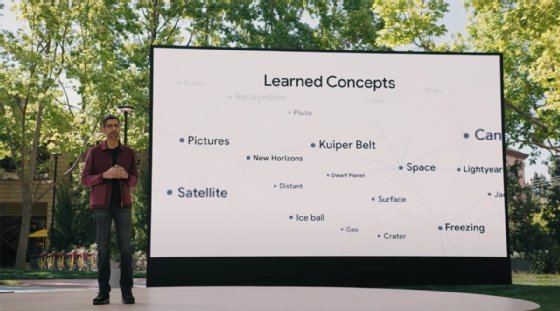
Google racing to catch up in growing enterprise AI market
At Google I/O this week, the tech giant launched a new enterprise machine learning platform and language recognition model, and advanced other AI products under development.
Google's Vertex AI platform, TPU v4 chip, LaMDA natural language advances and Multitask Unified ModelAI language model debuts demonstrate the tech giant's serious intent to be a viable player in the enterprise AI market.
But Google still has a way to go to meet the building AI demands of corporations, said Mike Gualtieri, a Forrester analyst.
"That's the sea change we are seeing in the market for AI platforms -- enterprise buyers want platforms that span the entire application lifecycle," Gualtieri said. "Google Vertex AI is a welcome step in the right direction and especially significant for the Google Cloud Platform as it competes in earnest against AWS and Microsoft for enterprise hearts, minds, applications and data."
Vertex AI, an automated machine learning platform, is Google's most significant recent step into AI. Google said it has been in test use at enterprises such as L'Oréal, a personal care company, and Essence, a data-driven global media agency, for months.
Google's other AI-related advancements, revealed this week at the Google I/O virtual conference, include the TPU v4 chip, which is promised to double the processing power of the current iteration, and its new conversational language machine learning model, Language Model for Dialogue Applications (LaMDA), designed to converse on any topic.

The vendor also showed off the AI language model dubbed MUM (Multitask Unified Model) that Google said will make search capabilities for images, video and in-context far more powerful.
At the developer-oriented conference, which started May 18 and ended May 20, Google CEO Sundar Pichai also demonstrated how the vendor's R&D arm is using AI to enhance its core search product with natural language understanding and better image and video search capabilities, and said it plans to enhance Google Workspace with assisted writing capabilities.
Another effort underway, Project Starline, relies on custom-built hardware and special equipment to make videoconferencing far more life-like, Pichai said. Starline uses machine learning, a light field display system, real-time compression and 3D computer vision to generate a more realistic experience of sitting across from others.
While Google has promised it would build a quantum computer within a decade and be carbon neutral by 2030, in the near term, the vendor will be under increasing pressure to catch up to AI innovators like software provider C3 AI if it wants to grab more enterprise market share, Gualtieri said.
"It's early days, but moving fast," Gualtieri said.
Gualtieri noted that Forrester has seen a dramatic jump, just over 54%, in recent years in enterprises using some form of AI.
"We expect that number to reach nearly 100% by 2024 because AI is a fundamental technology that will find its way into every application," he said.






